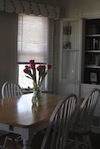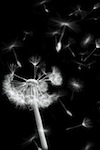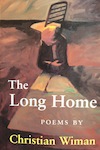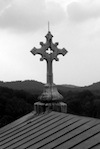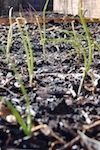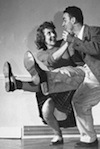 A lost balloon is a simple thing, but it’s a real loss to a child. Then we grow up, and we feel these same kinds of losses every day. A lost relationship. A lost job. A foreclosure on a home. Lost innocence. The loss of addiction. Bankruptcy. A lost reputation. We can try to explain the chemical makeup of the lost balloon to make it appear less meaningful. We can make up a sensible reason for that balloon to have been better off released into the sky. We can try to diminish what the balloon meant to us in the first place. But we cannot cheat sorrow. Loss shapes us. As do the friends that are there with us on the lawn when the balloon string slips out of our hands.
A lost balloon is a simple thing, but it’s a real loss to a child. Then we grow up, and we feel these same kinds of losses every day. A lost relationship. A lost job. A foreclosure on a home. Lost innocence. The loss of addiction. Bankruptcy. A lost reputation. We can try to explain the chemical makeup of the lost balloon to make it appear less meaningful. We can make up a sensible reason for that balloon to have been better off released into the sky. We can try to diminish what the balloon meant to us in the first place. But we cannot cheat sorrow. Loss shapes us. As do the friends that are there with us on the lawn when the balloon string slips out of our hands. A lost balloon is a simple thing, but it’s a real loss to a child. Then we grow up, and we feel these same kinds of losses every day. A lost relationship. A lost job. A foreclosure on a home. Lost innocence. The loss of addiction. Bankruptcy. A lost reputation. We can try to explain the chemical makeup of the lost balloon to make it appear less meaningful. We can make up a sensible reason for that balloon to have been better off released into the sky. We can try to diminish what the balloon meant to us in the first place. But we cannot cheat sorrow. Loss shapes us. As do the friends that are there with us on the lawn when the balloon string slips out of our hands.
A lost balloon is a simple thing, but it’s a real loss to a child. Then we grow up, and we feel these same kinds of losses every day. A lost relationship. A lost job. A foreclosure on a home. Lost innocence. The loss of addiction. Bankruptcy. A lost reputation. We can try to explain the chemical makeup of the lost balloon to make it appear less meaningful. We can make up a sensible reason for that balloon to have been better off released into the sky. We can try to diminish what the balloon meant to us in the first place. But we cannot cheat sorrow. Loss shapes us. As do the friends that are there with us on the lawn when the balloon string slips out of our hands.














